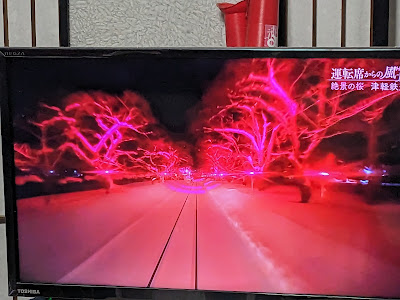Wednesday, May 07, 2025
The Monkey, the Human, and the Forest
Definitely read this book; サルと人と森. It was written over 100 years ago, but... It is the most relevant narrative for our times you will find.
Sunday, May 04, 2025
University Cafeteria
The daily special. Still just 500¥ despite price increases on just about everything over the past year.
Get Out and Vote
There's an upcoming election, and local secondary-school students have submitted original posters urging those 18 and older to perform their civic duty. A common theme: your vote can change the future.
Tuesday, April 29, 2025
Top 60 Blogs about Japan
This evening I received an email informing me Japan Glimpsed had been selected as one of the top 60 blogs about Japan.
For your consideration:
My name is Anuj Agarwal, I'm the Founder of FeedSpot.
I would like to personally congratulate you as your blog Glimpses of Japan has been selected by our panelist as one of the Top 60 Japan Blogs on the web.
https://bloggers.feedspot.com/japan_blogs/
This is the most comprehensive list of Top 60 Japan Blogs on the internet and I'm honored to have you as part of this!
Please consider the above.
100 Days After
100日祝い (ももかいわい) is a traditional observance celebrated 100 days after a baby's birth. The ceremony commences with a visit to a shrine to pray for the child's future, particularly all matters alimentary, followed by a formal meal. My granddaughter turned 100 last Sunday, and the following are photos of the event.
Tuesday, April 15, 2025
2820- Go Figure
According to the Japanese Ministry of Welfare and Labor, the number of unhoused in 2024.
Sunday, March 30, 2025
Strawberries
Is 20$ for a single Japanese strawberry ridiculous? And what about the carbon footprint?
Saturday, March 22, 2025
So it goes
Japan. Natural disasters. Noto Hanto residents who experinced the 1/1/2024 earthquake were treated to devastating floods 9 months later. Response: it sucks, but so it goes. Life.
Some folks need to believe that there's a plan. God's plan, test the individual's faith. Book of Job. Natural disaster。 No plan. Just is.
Friday, March 21, 2025
Trains and Sakura: Tsugaru Railway, Aomori
NHK program about rail lines known for sakura airing this evening. Outstanding. Some screen shots from the Tsugaru, Aomori segment.
; ">



Soto Zen Temple: 'Live Deeply in the Moment'
Signboard at the entrance to Dai Zen Temple. Some might translate this as carpe diem, others as mindfulness. I don't think it's akin to the Biblical "sufficient unto the day is the evil thereof", though that thought crossed my mind.
Subscribe to:
Posts (Atom)
























